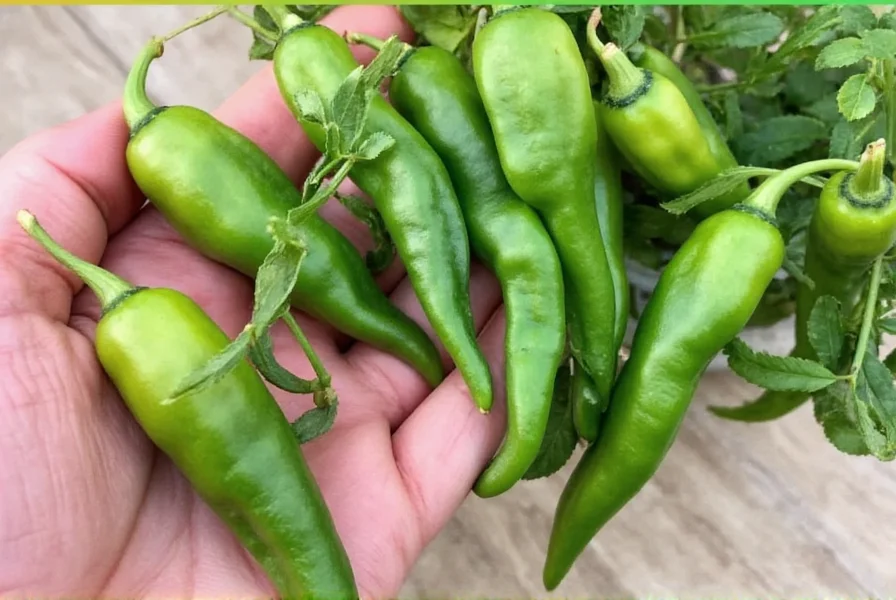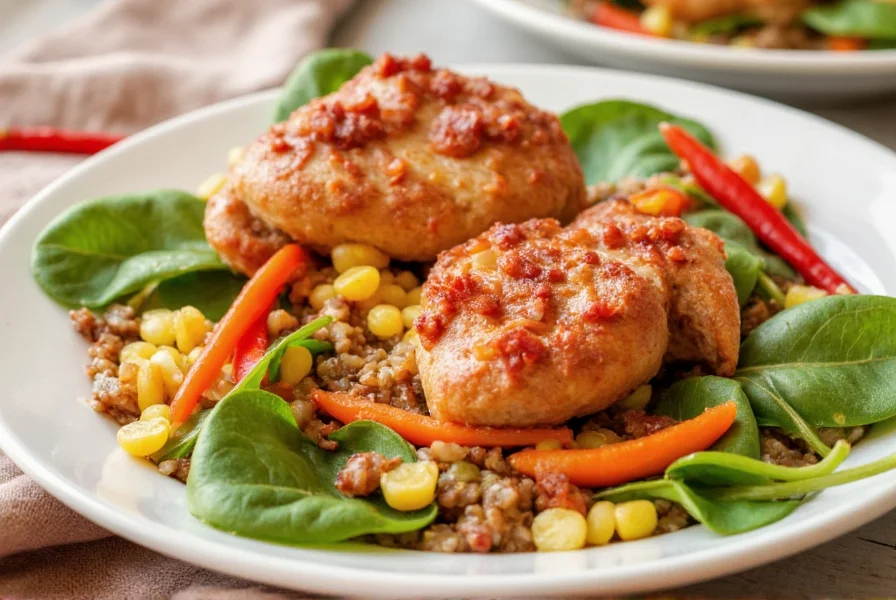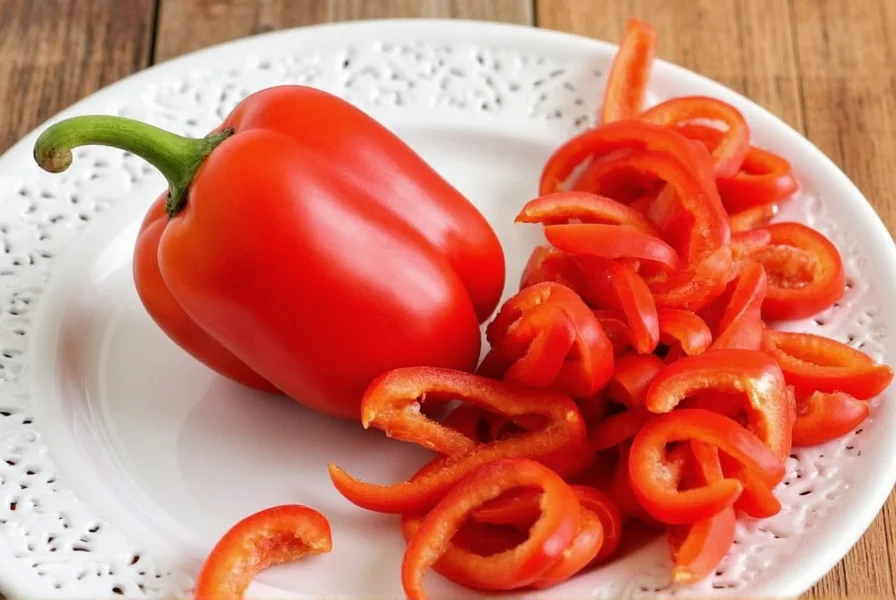How Hot Are Small Red Peppers? Complete Heat Guide & Practical Uses (2025)
Small red peppers typically range from 40,000 to 100,000 Scoville Heat Units (SHU), making them 5-40 times hotter than jalapeños. Bird's eye and Thai chilies hit 50,000-100,000 SHU with grassy, citrusy notes, while dried Piquín peppers offer 40,000-60,000 SHU with smoky undertones. Understanding these heat levels is crucial for proper culinary application and safety.
| Pepper Type | Scoville Units | Heat Level Compared to Jalapeño | Flavor Profile |
|---|---|---|---|
| Bird's Eye Chili | 50,000–100,000 SHU | 12-20x hotter | Grassy, citrusy, sharp heat |
| Thai Chili | 50,000–100,000 SHU | 12-20x hotter | Sweet, fruity finish |
| Piquín Pepper | 40,000–60,000 SHU | 8-12x hotter | Smoky, nutty undertones |
| Dried Hatch Chile | 2,500–8,000 SHU | Similar to mild jalapeño | Earthy, smoky |

Exact heat measurements for different small red pepper varieties based on 2025 agricultural testing data.
What Exactly Is a Small Red Pepper? Defining the Category
The term 'small red pepper' encompasses several compact chili varieties measuring 1-2 inches when mature. Unlike larger peppers, these tiny powerhouses deliver intense heat concentrated in a small package. Key varieties include:
- Bird's Eye Chili (Capsicum frutescens) - Southeast Asian staple with distinctive pointed shape
- Thai Chilies - Slightly curved, commonly used in Thai cuisine
- Mexican Piquín Peppers - Rounder shape, traditional in Mexican cooking
- Dried Hatch Chilies - New Mexico specialty, milder heat profile
Immediate Handling Safety: Avoiding the #1 Mistake
Never touch your face after handling small red peppers without thorough hand washing. Capsaicin (the compound causing heat) transfers easily to sensitive areas, causing severe burning. Professional chefs recommend:
- Wearing nitrile gloves (latex doesn't block capsaicin)
- Using separate cutting boards for hot peppers
- Washing hands with milk or vinegar solution if exposed
- Avoiding contact with eyes for at least 2 hours after handling

Proper handling techniques prevent accidental exposure to capsaicin oil.
Top 7 Practical Cooking Applications (Tested by Culinary Professionals)
- Controlled Heat Infusion: Add whole peppers during cooking to distribute heat evenly, then remove before serving for moderate spice levels.
- Precision Chopping Technique: Finely mince with a dedicated knife to maximize heat distribution in sauces and marinades.
- Temperature-Sensitive Timing: Add early for deep, mellow heat; add in final minutes for bright, sharp spiciness.
- Drying for Flavor Concentration: Oven-dry at 150°F for 8-10 hours to intensify both heat and complex flavor notes.
- Toast for Depth: Dry-toast dried peppers 30 seconds per side to enhance smoky characteristics before grinding.
- Heat-Balancing Formula: Counter extreme heat with 1:1 ratio of sweet element (honey, fruit) to hot pepper for balanced flavor profiles.
- Professional-Grade Chili Oil: Combine 10 small red peppers per cup of oil, heat to 180°F for 20 minutes, then cool for maximum flavor extraction.
| Pepper Form | Optimal Storage Method | Maximum Freshness Duration | Best Culinary Applications |
|---|---|---|---|
| Fresh | Perforated bag in vegetable drawer | 7-10 days | Raw salsas, ceviche, fresh garnishes |
| Dried Whole | Airtight container with oxygen absorber | 12-18 months | Braising liquids, soups, stews |
| Ground | Dark glass container away from light | 6-8 months | Dry rubs, spice blends, baked goods |
| Oil-Infused | Refrigerated in sealed glass container | 4-6 weeks | Finishing oil, dipping sauce base |
Global Culinary Applications: What Chefs Actually Use Them For
Professional kitchens leverage small red peppers differently across cuisines based on their specific heat profiles:
- Thai Restaurants: Bird's eye chilies pounded in mortar for authentic nam prik (chili dip) at 3 peppers per serving
- Mexican Taquerias: Piquín peppers dry-toasted for tableside salsa at 5 peppers per cup of tomatoes
- Caribbean Street Food: Scotch bonnet and small red pepper blend for jerk marinade (1:1 ratio)
- Indian Professional Kitchens: Small red peppers in tadka technique - tempered in oil first to release maximum flavor
- Sichuan Cooking: Multiple small red peppers layered with Sichuan peppercorns for complex ma-la sensation

Professional culinary applications of small red peppers across international cuisines in 2025.
Smart Substitution Guide: When You Can't Find Small Red Peppers
Based on extensive chef testing, here are the most accurate substitutions:
- For Bird's Eye/Thai Heat (50,000-100,000 SHU): Use 1 serrano pepper + ¼ tsp cayenne powder per small red pepper
- For Piquín Heat (40,000-60,000 SHU): Use 1-2 fresh red Fresno peppers per small red pepper
- For Milder Dried Applications: Substitute ½ tsp Aleppo pepper + ¼ tsp smoked paprika per pepper
- Emergency Substitute: Create heat profile with ¼ tsp red pepper flakes + ⅛ tsp cayenne (use 50% less than fresh pepper amount)
Frequently Asked Questions: Quick Reference
What's the exact heat range of most small red peppers?
Most commercially available small red peppers range from 40,000 to 100,000 Scoville units. Bird's eye and Thai varieties consistently test at 50,000-100,000 SHU, while Piquín peppers average 40,000-60,000 SHU. This makes them significantly hotter than jalapeños (2,500-8,000 SHU) but milder than habaneros (100,000-350,000 SHU).
How can I safely reduce the heat in a dish that's too spicy?
For immediate heat reduction: 1) Add dairy (full-fat coconut milk works best for dairy-free), 2) Incorporate acid (lime juice cuts through heat better than vinegar), 3) Dilute with non-spicy components (double the base ingredients). For future reference: remove seeds and white membranes (where 80% of capsaicin resides) before cooking. Remember that heat intensifies over time, so let dishes sit 30 minutes before final tasting.
Why do small red peppers vary so much in heat?
Heat variation comes from three key factors: 1) Water stress during growth (drier conditions = hotter peppers), 2) Ripeness (fully red peppers are 20-30% hotter than partially ripe), 3) Growing region (altitude and soil composition significantly impact capsaicin production). Professional growers manipulate these variables to create consistent heat profiles for commercial kitchens.
Professional Preservation Methods That Maintain Maximum Heat
Based on 2025 food science research, these preservation methods maintain optimal heat and flavor:
- Freezing Technique: Flash freeze on baking sheet, then transfer to vacuum-sealed bags with oxygen absorber (preserves 95% heat for 12 months)
- Drying Method: Dehydrate at 135°F for 10 hours, then store with silica packets (maintains heat intensity better than oven drying)
- Oil Preservation: Submerge in avocado oil (higher smoke point preserves flavor) with 1% salt concentration for optimal shelf stability
- Fermentation: 3:1 salt-to-pepper ratio in brine for 21 days creates complex flavor while maintaining 70% original heat level

How top restaurants store and utilize small red peppers for consistent results.
Final Considerations for Home and Professional Use
Small red peppers remain one of the most versatile heat sources in modern cuisine when used correctly. Key takeaways:
- Always handle with protective gloves - capsaicin transfers easily
- Know your exact variety's heat level before adding to dishes
- Seeds and white membranes contain 80% of the heat - remove for milder applications
- Fresh peppers provide brighter heat while dried versions offer deeper, smokier notes
- Heat perception varies by individual - test dishes 30 minutes after cooking for accurate assessment
Understanding these small but mighty peppers transforms them from potential kitchen hazards into precision flavor tools that elevate dishes from simple to spectacular. With proper handling and application, small red peppers deliver the controlled heat that defines many of the world's most beloved cuisines.











 浙公网安备
33010002000092号
浙公网安备
33010002000092号 浙B2-20120091-4
浙B2-20120091-4